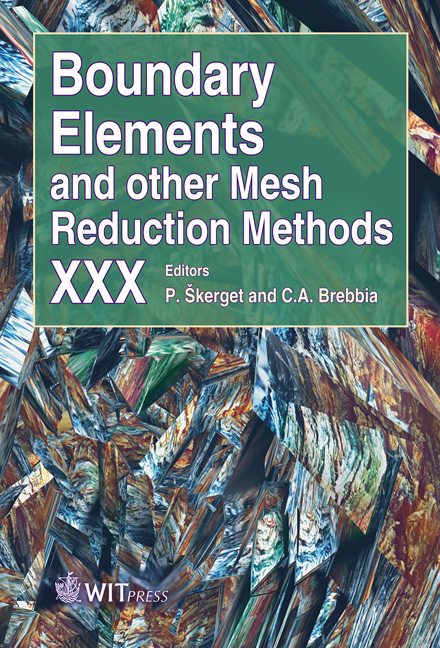Natural Convection In Porous Media Under Cross Temperature And Concentration Gradients With Boundary Element Method
Price
Free (open access)
Transaction
Volume
47
Pages
8
Page Range
65 - 72
Published
2008
Size
1,065 kb
Paper DOI
10.2495/BE080071
Copyright
WIT Press
Author(s)
J. Kramer, R. Jecl & L. Skerget
Abstract
Double-diffusive natural convection in a horizontal enclosure is studied numerically with the use of Boundary Element Method. The enclosure is heated and cooled along vertical walls, while horizontal walls are maintained at different concentration values. The Brinkman model is used to simulate the fluid flow through porous media, the density variation is taken into account by the Boussinesq approximation. The governing parameters of the problem are the Darcy number, porous Rayleigh number, Lewis number and buoyancy coefficient. Different flow regimes for thermal and solutal dominated flows are demonstrated for different values of governing parameters. The results are compared to those in published studies, obtained with other approximative methods. Keywords: Boundary Element Method, porous medium, double-diffusive natural convection, Brinkman model. 1 Introduction Double-diffusive natural convection in a saturated porous media is of fundamental importance in many engineering branches e.g. civil engineering, mechanical engineering, chemical engineering. Several problems in nature or industry can be modeled as convective flow in enclosure filled with porous media such as underground spreading of pollutants, geophysical systems, fuel storage installations. In general two main configurations have been considered in the literature: heat and mass gradients are imposed horizontally along the enclosure or heat and mass gradients are imposed vertically along the height of the enclosure. Only few recently
Keywords
Boundary Element Method, porous medium, double-diffusive natural convection, Brinkman model.





